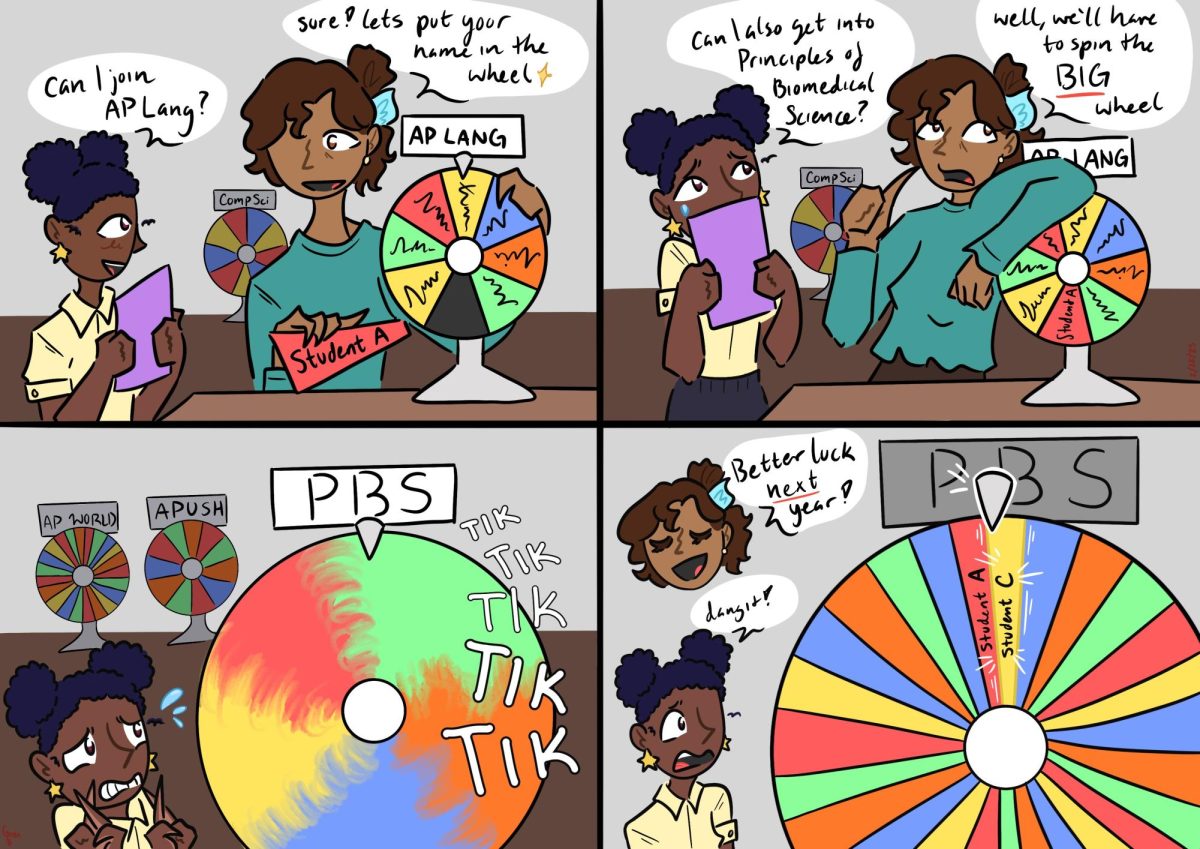When technology is used in the classroom, a teacher might see some MacBooks, one or two iPads, and a whole slew of Chromebooks. These school-issued Chromebooks are not exactly popular, but they are the most used among students because the district mandates that each student takes one.
“Chromebooks remove the equity component for student technology and ensure that everyone has a computer in the classroom,” Cal High Principal Demetrius Ball said.
But while it is true that providing a Chromebook for each student encourages equality and is a readily available option, there are more efficient alternatives.
For example, the school can issue Chromebooks like lockers, distributing them based on need rather than policy.
This could save more money than letting many of the devices collect dust at home. Plus, it also opens up pathways to spend more per student to purchase higher-end technology. Newer, more reliable laptops are less likely to malfunction, so replacing them would be less of a concern.
One might argue this creates visible barriers among students by highlighting who is able to afford technology such as MacBooks. But this is a pre-existing problem. Those who own expensive products already bring them to school, and students who work on Chromebooks are not necessarily ones who do not own MacBooks.
Making Chromebooks optional doesn’t resolve this issue but doesn’t exacerbate it either.
In some situations, Chromebooks are undoubtedly necessary. During CAASPP testing or exams that use apps such as Formative LockDown Browser, these are the only forms of technology that allow for proper supervision and security.
In these cases, the school can introduce Chromebook carts. The carts can be shared between classes of a department or an entire building, depending on how often they are required. On test days, students who do not have a Chromebook can borrow one from a cart and then return it and the end of class.
The school would need to provide more Chromebooks than simply based on individual need, but this is still better than the current situation because a cart will be used by a maximum of several classes simultaneously, not by all students.
Students who forget to bring their personal technology on certain days also will be able to access a backup from a Chromebook cart, similar to how students can borrow laptops from the library now.
Although issuing a Chromebook per student is well-intentioned, it isn’t the most efficient system. Instead, by providing Chromebooks only to students who need them and introducing Chromebook carts for backups, the school should be able to reduce costs while still offering a more beneficial option for all students.
Chromebooks should be provided based on need
December 15, 2023
More to Discover



